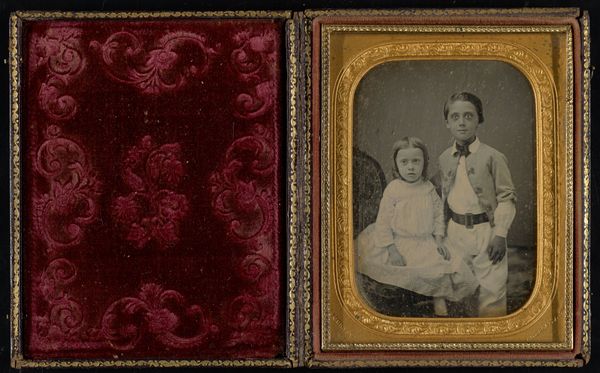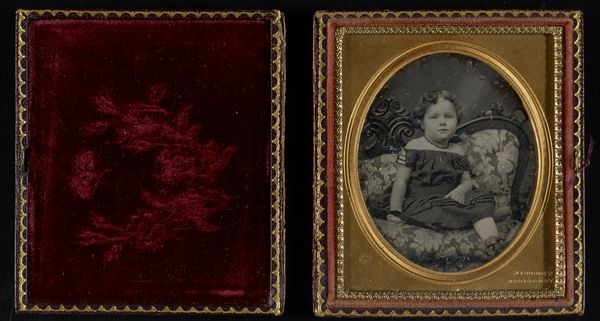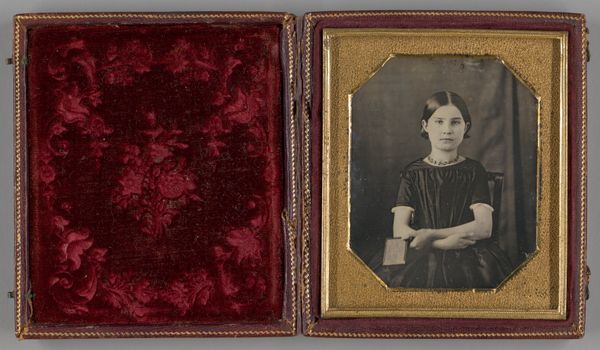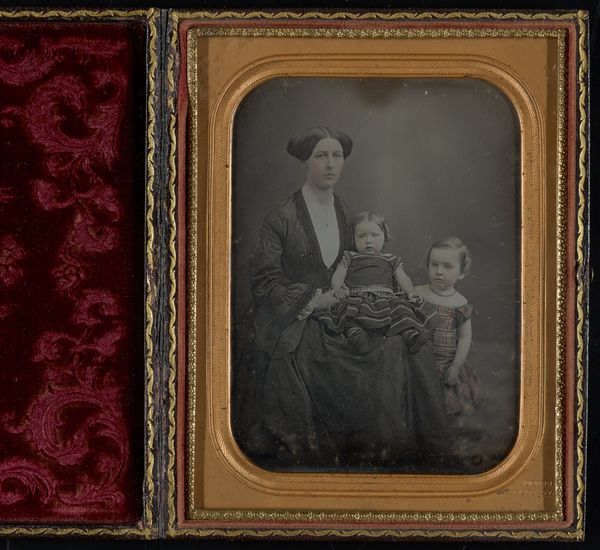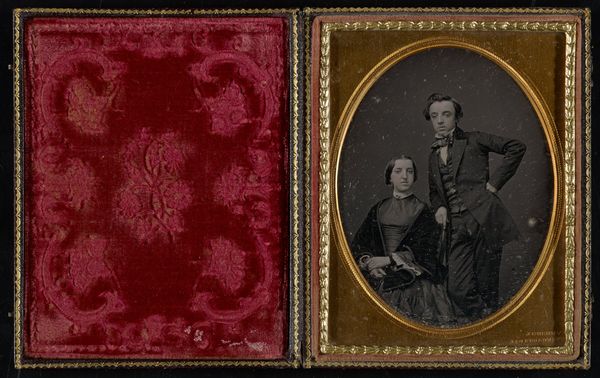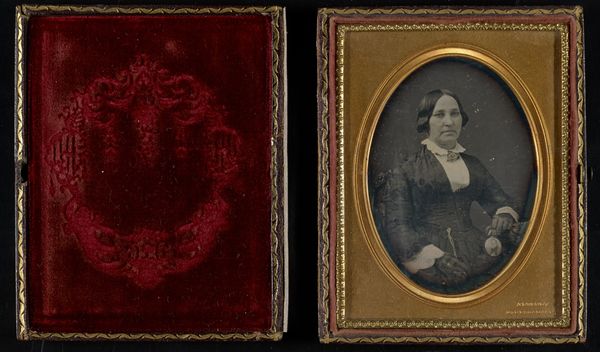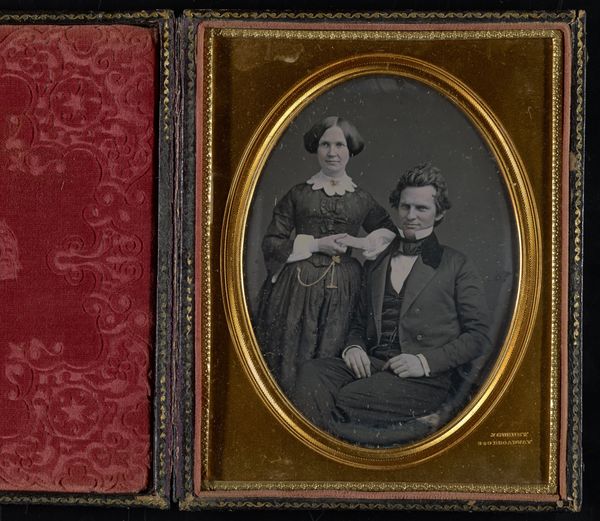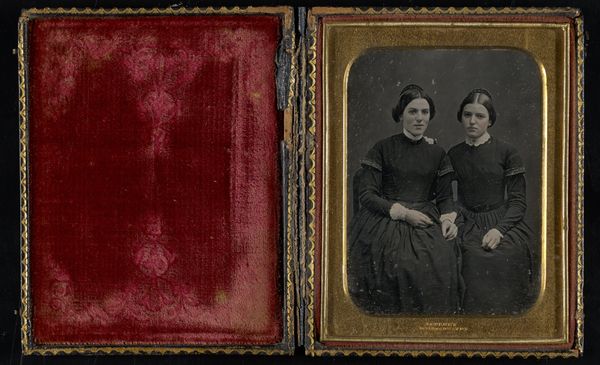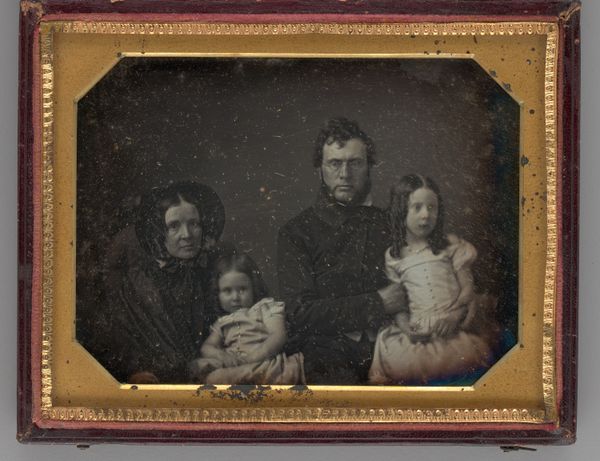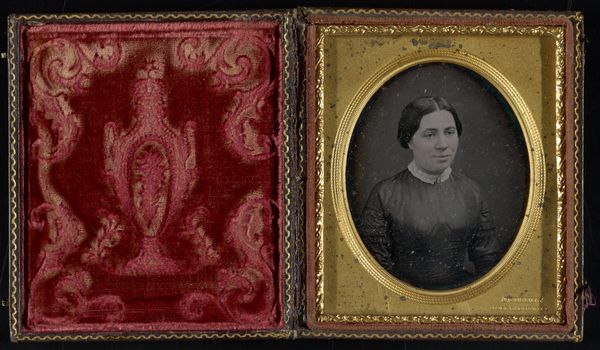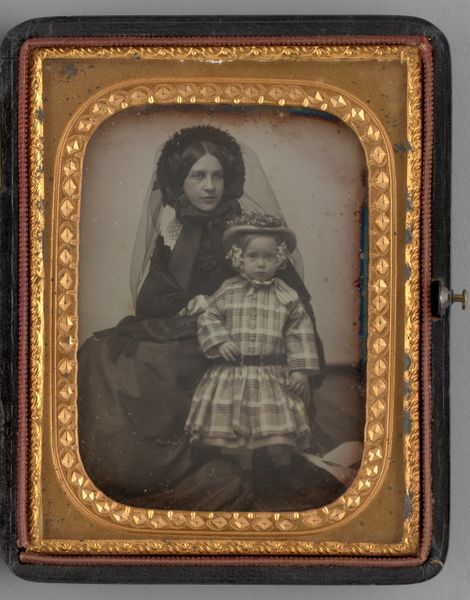
daguerreotype, photography
#
portrait
#
16_19th-century
#
mother
#
death
#
sculpture
#
daguerreotype
#
photography
#
child
#
romanticism
Dimensions: 8.3 × 7 cm (plate); 9.3 × 8 × 1.5 cm (case)
Copyright: Public Domain
Curator: Here we have an untitled daguerreotype from the mid-19th century, circa 1839 to 1860, currently residing at The Art Institute of Chicago. The artwork depicts a mother holding her deceased child. Editor: My first reaction is… unsettling. The stark contrast, the mother’s unreadable expression. It's heavy with unspoken grief, and even the stiff formality can't quite contain it. The stillness is haunting. Curator: Indeed. Let's consider the materiality of a daguerreotype. This direct positive image on a silvered copper plate results in striking detail but also inflexibility in manipulation. That sense of "stillness," as you put it, is baked into the very process. Death photography served a specific social function then, offering a final memento in a time of high infant mortality. Editor: The process interests me—the way light interacts with those metallic surfaces to capture such intimate human moments, despite the industrial procedure. Do you know who created this? I imagine producing one of these required resources and specialized knowledge during that period, making this perhaps more of a commercial act than pure personal expression. Curator: The creator is, unfortunately, anonymous. The lack of a known author elevates the image to a societal artifact rather than simply a personal one. We can analyze the composition, though. Notice the stark lighting; the mother’s dark dress contrasting against the pale child, almost mimicking a Pietà. Semiotically, this highlights her role and her loss. Editor: It also makes me wonder about the studio settings and props. Was that dress chosen, the child’s positioned this way, or the mother’s pose constructed, to maximize clarity and visual impact within the daguerreotype's inherent limitations? Even that elaborate framing—gold detailing, red velvet backing. Such precious materials framing such sadness. It strikes me as simultaneously beautiful and deeply discomfiting. Curator: Precisely. Those visual and structural choices contribute to its profound, lingering impact. The rigid pose is not a defect, but a key element for this type of funerary photography. Editor: The materials tell one story, the composition another, and the haunting image still manages to convey intense emotion despite those technical and economic considerations. Curator: An apt reflection. The structural elements certainly amplify the underlying sociohistorical context. Editor: Yes, quite sobering to contemplate what labor and cultural conditions lie beneath the surface of its creation.
Comments
No comments
Be the first to comment and join the conversation on the ultimate creative platform.

